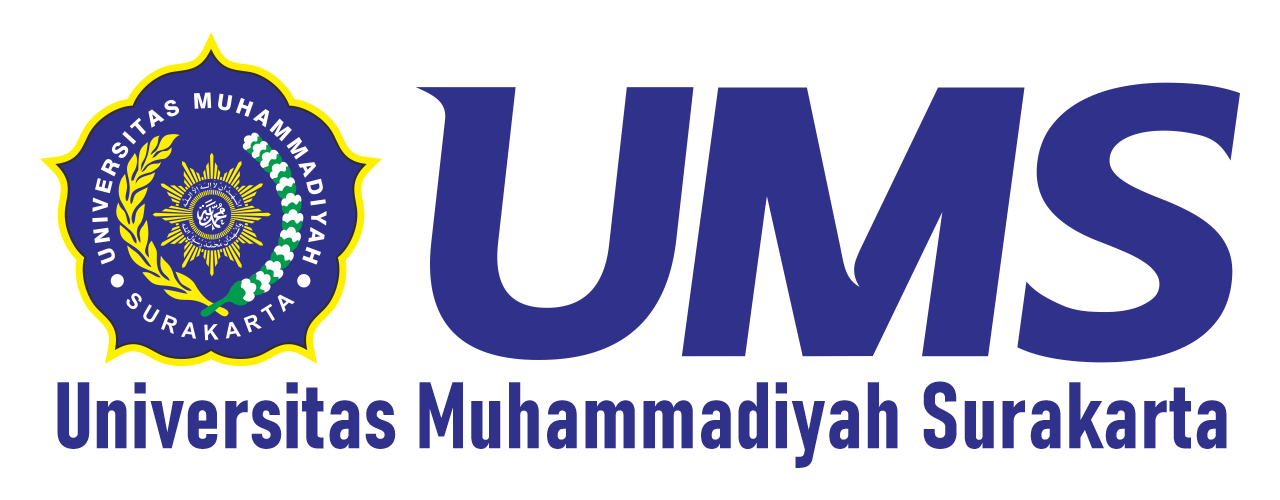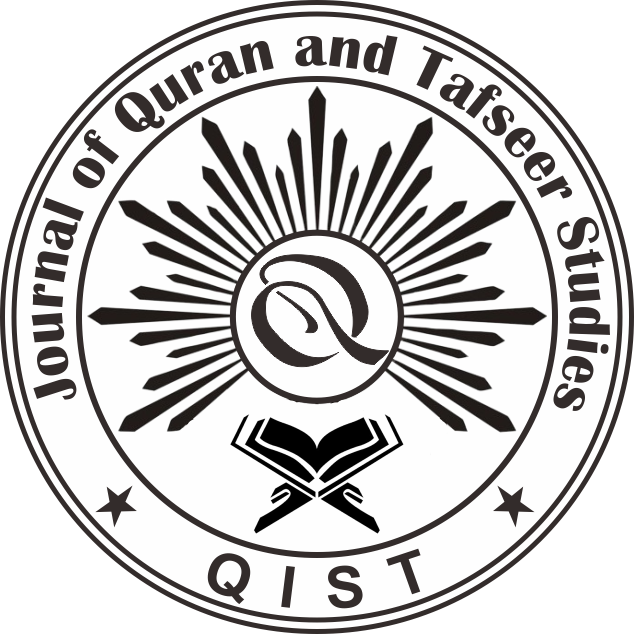STUDY OF THE PRACTICE OF READING SURAH AL-ISRA VERSES 79-82 AT DUHA TIME AT HIDAYATUL ISLAMIYAH PESANTREN
DOI:
https://doi.org/10.23917/qist.v1i3.2766Keywords:
Surah al-Isra verse 79-82, Reading, Meaning, Living QuranAbstract
The early tradition of reading Surah al-Isra by the Prophet. done at night which is read in its entirety before the Prophet Saw sleep. This is different from the phenomenon that occurs at the Hidayatul Islamiyah Islamic Boarding School, where they only practice four verses from Surah al-Isra, namely verses 79-82 which are read during duha. Based on this phenomenon, the researcher examines the practice, understanding of teachers and students and the meaning of these readings. This research is a qualitative research with a field study approach. Data was collected through observation techniques, interviews and documentation. The results showed that reading Surah al-Isra verses 79-82 was carried out in congregation after the Duha prayer followed by recitation of remembrance and other prayers. The teacher's understanding of the four verses is in line with the exegetes' interpretation, but not perfect. While the students' understanding of the contents of the verse can be grouped into two, namely understanding based on the translation of the pronunciation only, and understanding of the interpretation of the verse in general. Their understanding is also in line with the interpretation of the interpreter and the understanding of the teacher. As for the meaning of the practice of reciting Surah al-Isra verses 79-82, they include giving peace and self-submission to Allah Swt, ease in studying knowledge, smooth sustenance and closeness to Allah Swt and departure in worship.
References
M. Goudarzi, "Unearthing Abraham's Altar: The Cultic Dimensions of din , islam , and ḥanif in the Qur'an," J. Near East. Stud., vol. 82, no. 1, pp. 77–102, Apr. 2023, doi: 10.1086/723646.
T. Elshof, "The challenge of religious education to deal with past and present Catholicism," Br. J. Relig. Educ., vol. 41, no. 3, pp. 261–271, 2019, doi: 10.1080/01416200.2018.1484689.
A. S. SICAK, "Nüzûl Sıralaması ve Metinsel İçerik Açısından Yâsîn Sûresinin Tarihlendirilmesi," Cumhur. İlahiyat Derg., vol. 24, no. 3, pp. 1285–1306, Dec. 2020, doi: 10.18505/cuid.787278.
M. S. Assingkily, M. Arif, M. Marhumah, and K. Z. Putro, "Living Qur'an dan Hadis di MI Nurul Ummah (Rutinitas, Ritual Ibadah dan Pembinaan Akhlak)," AR-RIAYAH J. Pendidik. Dasar, vol. 4, no. 1, 2020, doi: 10.29240/jpd.v4i1.1402.
M. Z. Hasan, "AL-QUR'AN SEBAGAI MEDIUM PENYEMBUHAN DALAM TRADISI ‘BEJAMPI' DI LOMBOK (Kajian Living Qur'an)," el-'Umdah, vol. 3, no. 1, 2020, doi: 10.20414/el-umdah.v3i1.2156.
D. Junaedi, "Living Qur'an: Sebuah Pendekatan Baru dalam Kajian Al-Qur'an (Studi Kasus di Pondok Pesantren As-Siroj Al-Hasan Desa Kalimukti Kec. Pabedilan Kab. Cirebon)," J. QUR'AN HADITH Stud., vol. 4, no. 2, 2015, doi: 10.15408/quhas.v4i2.2392.
M. Turmuzi, "STUDI LIVING QUR'AN: ANALISIS TRANSMISI TEKS AL-QUR'AN DARI LISAN KE TULISAN," BASHA'IR J. Stud. AL-QUR'AN DAN TAFSIR, 2022, doi: 10.47498/bashair.v2i1.889.
M. S. Assingkily, M. Arif, M. Marhumah, and K. Z. Putro, "LIVING QUR'AN DAN HADIS DI MADRASAH IBTIDAIYAH (MI): PERSPEKTIF TEORI THOMAS LICKONA," Al-Aulad J. Islam. Prim. Educ., vol. 4, no. 1, 2021, doi: 10.15575/al-aulad.v4i1.9828.
U. Ni'mah, "The Living Qur'an : Self Healing dengan Ayat-ayat al-Qur'an," Al-Manar J. Kaji. Al-Qur'an dan Hadits, vol. 8, no. 2, 2022.
M. Ali, "Kajian Naskah dan Kajian Living Qur'an dan Living Hadith," J. QUR'AN HADITH Stud., vol. 4, no. 2, 2015, doi: 10.15408/quhas.v4i2.2391.
A. Putra, "Kajian Al-Qur'an Di Indonesia (Dari Studi Teks Ke Living Qur'an)," Tajdid J. Ilmu Keislam. dan Ushuluddin, vol. 21, no. 2, 2019, doi: 10.15548/tajdid.v21i2.221.
U. Labibah, I. Taufiq, and M. Y. Alimi, "Living Qur'an of Pesantren Women: A Manifestation of QS. An-Nisa 34 in A Woman Leadership Role of Nyai Munjidah Wahab," J. Stud. Ilmu-ilmu Al-Qur'an dan Hadis, vol. 23, no. 1, 2022, doi: 10.14421/qh.2022.2301-05.
R. Husna, A. Zayyadi, and D. Oktafiana, "The Relationship of Faith and Tolerance in The Film One Amen Two Faith: Living Qur'an Perspective," J. Islam Nusant., vol. 6, no. 1, 2022.
T. S. S. & H. & S. Siregar, "Tradisi Pembacaan Yasin 41 Studi Living Qur'an," J. El-Thawalib, vol. 2, no. 2, 2021.
I. A. Rakhman, "Studi Living Qur'an dalam Tradisi Kliwonan Santri PP. Attauhidiyyah Syekh Armia bin Kurdi Tegal," Madaniyah, vol. 9, no. 1, 2019.
A. Rafiq, "Living Qur'an: Its Texts and Practices in the Functions of the Scripture Living Quran: Teks Dan Praktik Dalam Fungsi Kitab Suci," J. Stud. Ilmu-Ilmu al-Qur'an dan Hadis, vol. 22, no. 2, 2021.
A. Zayyadi and I. Maziyah, "Living Qur'an Tradisi Islam Nusantara: Kajian Terhadap Tradisi Pelet Betteng Pada Masyarakat Probolinggo," J. Islam Nusant., vol. 05, no. 02, 2021.
S. Nurani, L. Maulana, and E. Purwati, "Living Qur'an as New Market Trends of Islamic Education in Indonesia," Hayula Indones. J. Multidiscip. Islam. Stud., vol. 6, no. 1, 2022, doi: 10.21009/hayula.006.01.01.
S. Ravn, "Integrating qualitative research methodologies and phenomenology—using dancers' and athletes' experiences for phenomenological analysis," Phenomenol. Cogn. Sci., vol. 22, no. 1, pp. 107–127, 2023, doi: 10.1007/s11097-021-09735-0.
S. Lawrence and K. Hylton, "Critical Race Theory, Methodology, and Semiotics: The Analytical Utility of a ‘Race' Conscious Approach for Visual Qualitative Research," Cult. Stud. - Crit. Methodol., vol. 22, no. 3, pp. 255–265, 2022, doi: 10.1177/15327086221081829.
J. Zahle, "Reactivity and good data in qualitative data collection," Eur. J. Philos. Sci., vol. 13, no. 1, pp. 1–18, 2023, doi: 10.1007/s13194-023-00514-z.
D. Glynn, "Qualitative Research Methods in Translation Theory," SAGE Open, vol. 11, no. 3, 2021, doi: 10.1177/21582440211040795.
F. H. Klykken, "Implementing continuous consent in qualitative research," Qual. Res., vol. 22, no. 5, pp. 795–810, 2022, doi: 10.1177/14687941211014366.
M. del M. Haro-Soler and N. Singer, "Métodos cualitativos y mixtos en la formación de traductores: una aproximación a las experiencias y percepciones del estudiantado," Cad. Tradução, vol. 42, no. 01, pp. 1–27, Nov. 2022, doi: 10.5007/2175-7968.2022.e82814.
T. P. Østern, S. Jusslin, K. Nødtvedt Knudsen, P. Maapalo, and I. Bjørkøy, "A performative paradigm for post-qualitative inquiry," Qual. Res., 2021, doi: 10.1177/14687941211027444.
A. Ghoni and G. Saloom, "Idealisasi Metode Living Qur'an," Himmah J. Kaji. Islam Kontemporer, vol. 5, no. 2, 2021, doi: 10.47313/jkik.v5i2.1510.
S. Syamsudin, "Metodologi Penelitian Living Qur'an dan Hadis," TH-Press, 2007.
M. Sajid, "Spiritual Legacy, Sufi Identity, and Mystical Knowledge in TaSliya formulae," Welt des Islam., vol. 63, no. 2, pp. 213–242, 2022, doi: 10.1163/15700607-20220008.
H. T. Nhac, "International Journal of Language and Literary Studies," Int. J. Lang. Lit. Stud., vol. 3, no. 3, pp. 1–19, 2021.
R. Adiansyah, A. Sofia, M. Bensar, A. Adams, and M. A. Barakat, "ROLAND BARTHES SEMIOTIC STUDY: UNDERSTANDING THE MEANING WORD OF 'AZAB, A REINTERPRETATION FOR MODERN SOCIETY," QiST J. Quran Tafseer Stud., vol. 2, no. 3, pp. 255–274, Jul. 2023, doi: 10.23917/qist.v2i3.1445.
K. Nugroho, M. Z. Kiram, and D. Andriawan, "THE INFLUENCE OF HERMENEUTICS IN DOUBLE MOVEMENT THEORY (CRITICAL ANALYSIS OF FAZLURRAHMAN'S INTERPRETATION METHODOLOGY)," QiST J. Quran Tafseer Stud., vol. 2, no. 3, pp. 275–289, Aug. 2023, doi: 10.23917/qist.v2i3.2531.
W. Weller and L. de Moraes Braga Bassalo, "A insurgência de uma geração de jovens conservadores: Reflexões a partir de Karl Mannheim," Estud. Avancados, vol. 34, no. 99, 2020, doi: 10.1590/S0103-4014.2020.3499.023.
M. Hammersley, "Karl Mannheim and Jean Floud: a false start for the sociology of education in Britain?," London Rev. Educ., vol. 20, no. 1, 2022, doi: 10.14324/LRE.20.1.15.
H. Hamka, "SOSIOLOGI PENGETAHUAN: TELAAH ATAS PEMIKIRAN KARL MANNHEIM," Scolae J. Pedagog., vol. 3, no. 1, 2020, doi: 10.56488/scolae.v3i1.64.
Downloads
Submitted
Accepted
Published
How to Cite
Issue
Section
License
Copyright (c) 2022 Abd. Wahid, Dewi Putri Erdina, M Mahmudulhassan

This work is licensed under a Creative Commons Attribution 4.0 International License.














